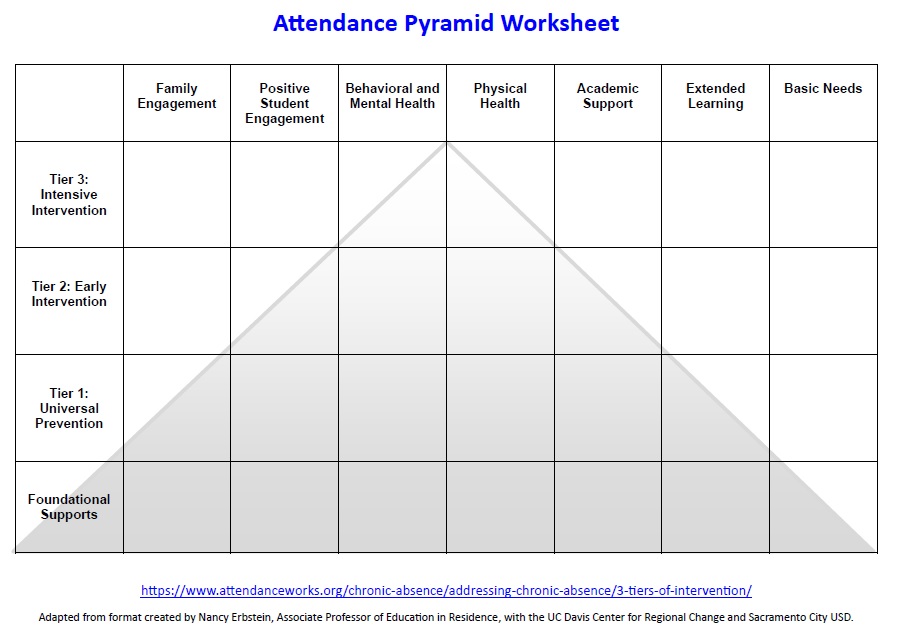Strategy 3: Review Available Resources
Use this deeper understanding of the attendance challenges facing your students to take stock of supports available in your school and community. Consider filling in a pyramid worksheet to map out what you can offer to your students. First, highlight the resources that you can use in your classroom for Tier 1, then think about the resources that would be most relevant to the chronically absent students with whom you are working. Keep in mind that supports should be additive. A student who is moderately chronically absent should be supported by both Tier 1- and Tier 2-level supports, whereas severely chronically absent students should benefit from all levels of support. Note what already exists as well as where you see gaps.
Tier 3 interventions are vital for our most vulnerable students who face serious hurdles to getting to school and often may be involved in foster care or the juvenile justice system. These students may experience absences for factors beyond their control such as changes in their foster care placements and frequent out-of-school appointments due to court involvement. Educators are not expected to address these complex needs on their own. Instead, they need to know how to tap into the resources and supports offered in order to make a greater impact in improving attendance for these vulnerable students.
Fill in the pyramid with the services and/or people (school nurse, counselor, family liaisons, after-school providers, social worker, or school psychologist) who can help. Check to see if your school has a list of people and resources that are available.
Your school may also have partnerships with community-based organizations and agencies that can provide support. Tap into these community partners. They are often equipped to address attendance barriers that schools do not have the resources to tackle. If you are not sure who those community partners are, the attendance team, community schools coordinator or the principal should be able to help identify them.
